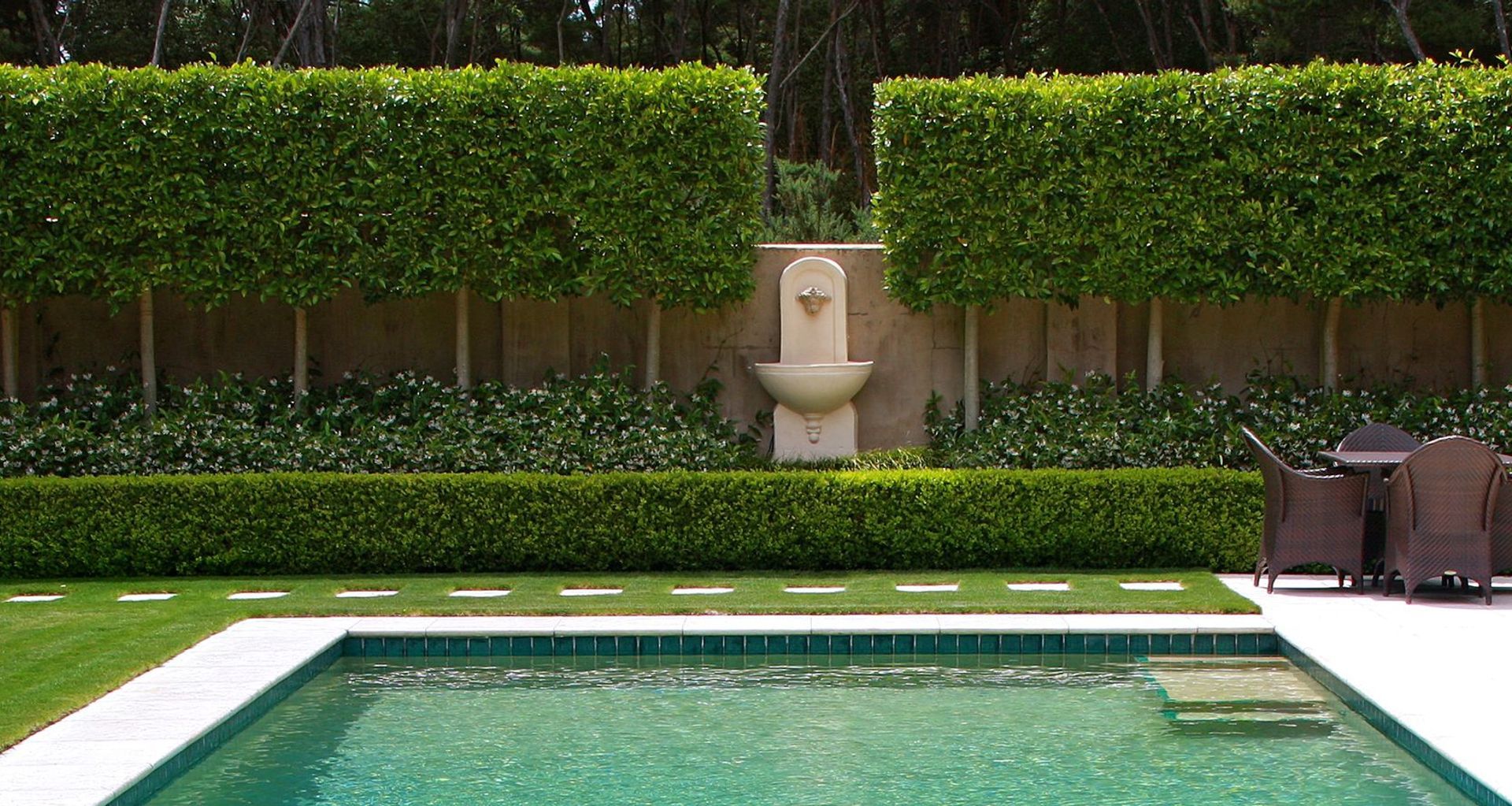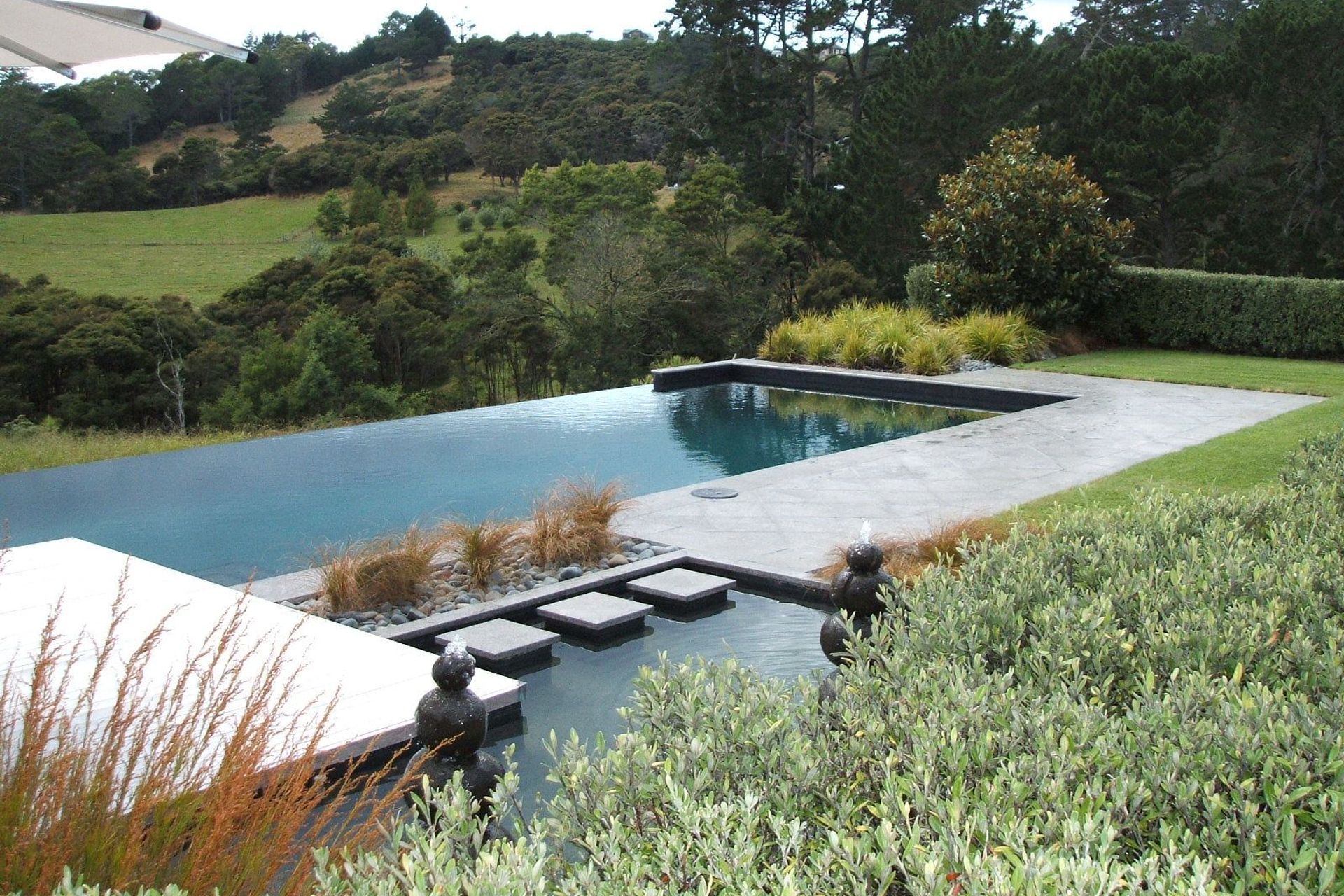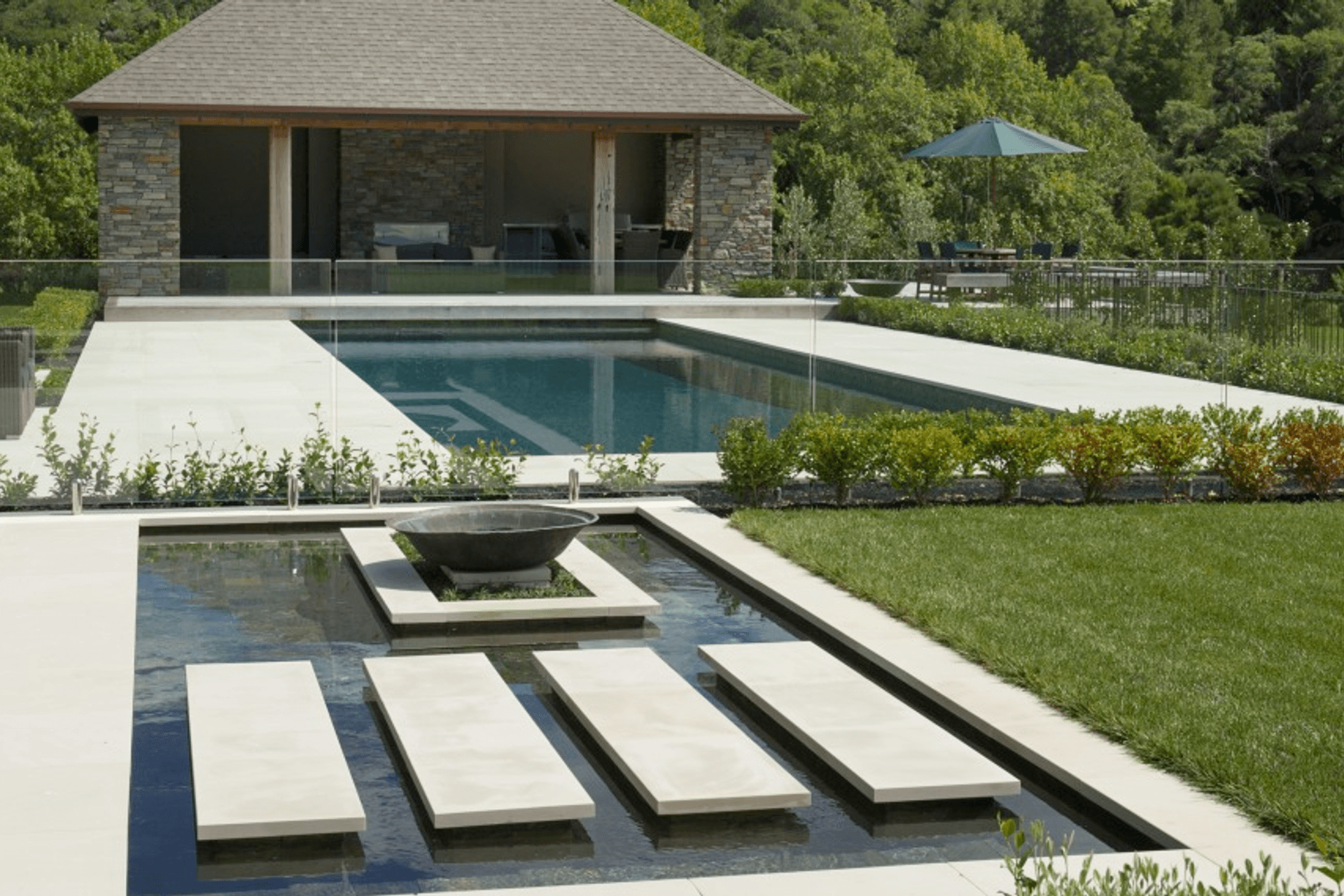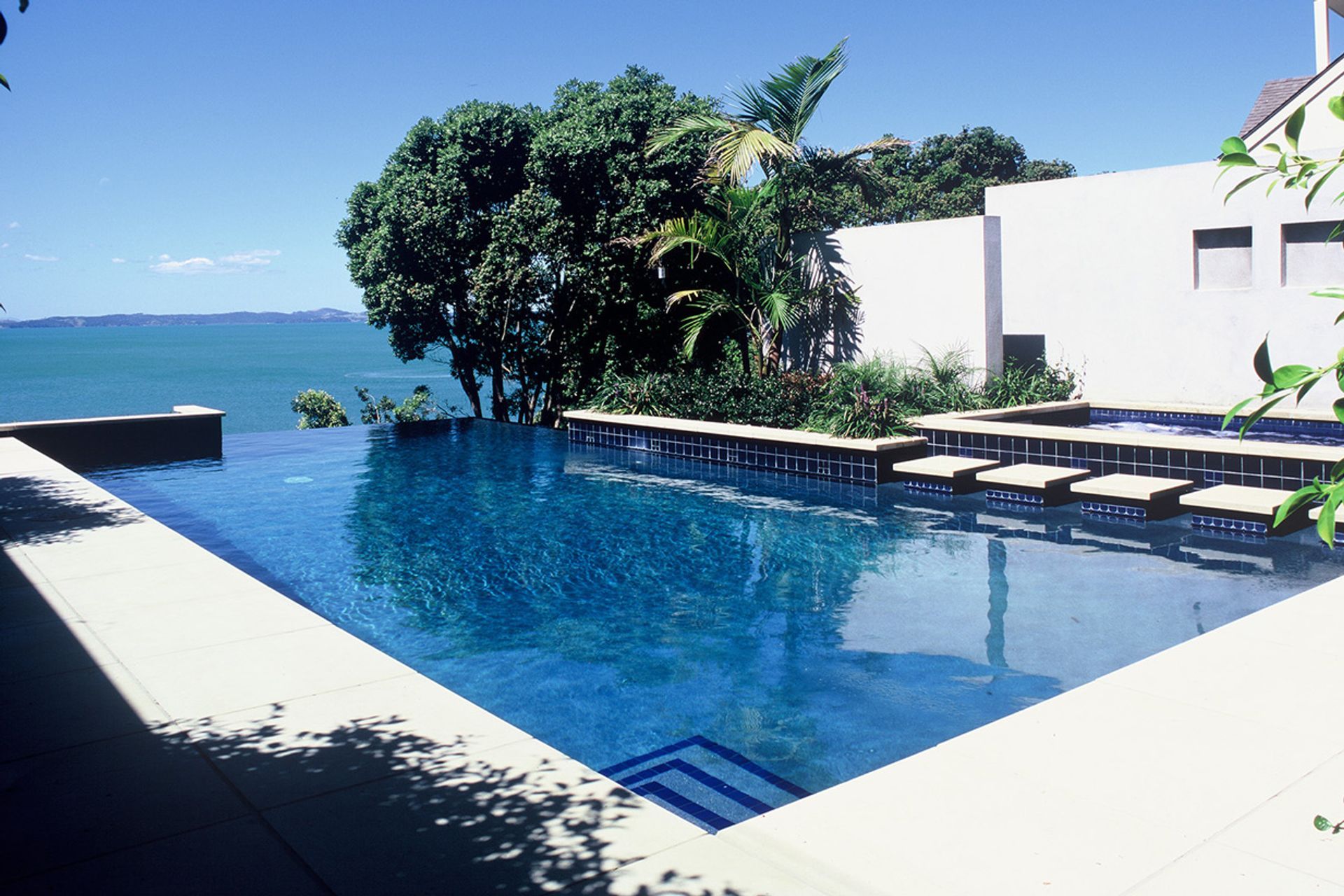Swimming pool design: secrets on how to avoid common pitfalls

Start with some really good quality design advice. A pool is a high-value item and, as with all investments, it is always advisable to get some quality advice – hire a swimming pool designer.
Every square metre of land in most suburban sections needs to be carefully used so that the space is maximized and no corner is wasted. This is where a designer will save you money and make sure that the pool adds to the utility of your section and adds a beautiful feature without losing valuable space for other things. No matter how simple your pool might be, if it is in the wrong place you can waste the spaces around it, upset access-ways and generally lose ground.
A swimming pool builder is a construction person, not usually a designer. Experienced pool builders can offer a wealth of practical advice and construction knowledge but may not be skilled in spatial arrangements. A good pool builder will recommend a designer and make sure you get the best out of your section. Alternatively, you can find out who designed pools that you like and follow a trail until you find a professional that you are comfortable working with.
If you are thinking about a swimming pool there are many things to think about and be aware of to be ready for discussions with designers.
SWIMMING POOL BUDGET
A swimming pool can range from $40,000 to $500,000 and upwards. We would suggest being realistic from the outset on whether you are going for a complex resort stye pool or a minor plunge pool based purely on budget. The bigger and/or more complex a pool is the more it will cost. A simple rectangle will give you the most for your money. Budget constraints are your most important design decision
TYPE OF POOL
Materials will also make a difference to your budget and to the look of a pool.
A pre-made fibreglass swimming pool will be a cheaper installation but the design opportunities are limited. If space is tight, a custom shape can sometimes fit a lot more efficiently into a small space.
Concrete pools will cost more but have a higher perceived value so may end up adding more value to your property even though it costs more.
POOL MATERIALS AND FINISHES
Swimming pools can be simply plastered, finished with one of the more durable, quality controlled manufactured colour mixes, or they can be fully tiled at great expense. The most common solution is to use the pre-mixed plaster compounds and achieve quality control, combined with a well-chosen splash tile for the waterline and for any shallow areas. In NZ the most common mixes at the moment are marketed as Quartzone or Hydrazzo, both have excellent websites.
Most people want a blue pool but there are some surprising alternatives. The depth of water substantially changes the pool colour chosen, so this is certainly something to be aware of. For example, a white swimming pool colour will generally be a soft baby blue and a dark blue will turn almost black.
We would suggest choosing a natural base colour rather than a manufactured blue colour. The strong blues get too bright and never alter with the light so you lose opportunities for daily and seasonal change. Surprisingly, a grey plaster will give a remarkable tropical blue that changes with the light and can be a very subtle colour in every light.
Make sure before you choose a colour that you have seen a real-life swimming pool in that colour. They change with the different sky colours/cloud cover so a couple of visits might be a good idea.
ACCESS OPTIONS
You will need to decide whether you are happy to lose access on one or more sides of a pool to save room or to create a feature. It may be that the boundary or rear wall of the pool becomes a feature wall or a raised planter with plants is used to provide privacy. Reduced access can be a good and bad thing; on the plus side having paving on only 3 sides of a swimming pool can stop children running around and around the pool, thus saving accidents. On the minus side it can make maintenance a little more difficult as access to the splash tiles is restricted.
SWIMMING POOL FENCING
Swimming pool fencing position and style can make or break a design and every pool should be designed with pool fencing rules in mind. Design the pool around the pool fencing style and position.
Every country has different pool fencing rules, although it does need to be taken very seriously it needn’t ruin the design if it is handled with style.
Pool fencing will be the subject of another blog, this is a detailed subject which needs more than just a short mention.
SWIMMING POOL COVERS
Covering up your beautiful pool is good for heat loss but not useful for leaf protection or maintenance issues and is certainly not nice on the eyes!
Unless it is a full surface cover from paving edge to edge or a retractable cover that you can walk on and sweep off leaves (it will not help with leaves) they will fall in as you remove the cover. A cover will only save heat loss and often the extra money that it costs to buy and install the cover will be hard to recover in electricity savings, so you might be better to enjoy the beauty of your pool and go without a cover.
This approach may seem simplistic but there is nothing so sad in the middle of winter as a pool sitting under a dead weight of wet pool cover when you could be looking at your sparkling blue water. Also, in the summer when the pool cover always has to be removed before a swim it will put children off using the pool. Consider going without a cover for the benefit of aesthetics in your living area.
UTILITY AREAS
Pumps, furnishings and pool toys often need storing close to the pool. Take care to place a shed thoughtfully so it doesn’t ruin the outlook over your pool. If you can’t place it out of the way in a hidden corner, build a feature screen wall or grow a hedge and place the pool sheds behind that so it is entirely hidden.
If you have the space make the pool shed as roomy as possible and accessible so that you are not bending or crawling to get to the switches and taps. Sometimes, where space is premium, a pool shed can be set up like cupboards with good-looking louvre doors, although you don’t need to walk in but (once the doors are open) it is all accessible. We would suggest avoiding the lift up lid version, the lids are heavy and if they come down on you it can be very dangerous.
We have lots more to share so please look out for more articles on pool design. There certainly is a lot to know!
PLEASE CONTACT US TO BOOK IN A CONSULTATION WITH ONE OF THE SHAFER DESIGN TEAM.



